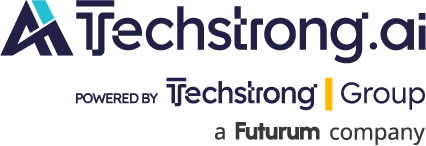
Artificial intelligence (AI) agents are gaining momentum for their ability to reason, troubleshoot and automate enterprise workflows. However, in the rush to chain large language models (LLMs) and simulate intelligence, many overlook a critical requirement for success in real-world deployments: Resource awareness.
The best agents won’t be the ones that generate the most output, but the ones that are designed to make smart tradeoffs: Knowing when to reason deeply, when to act quickly and how to optimize under real-world constraints.
Here’s why building effective AI agents means more than chaining LLMs — it requires thoughtful architecture and is grounded.
Enterprise Environments Demand Tradeoffs
There’s a quiet truth anyone building serious agentic systems eventually discovers: This isn’t just about chaining powerful models together — it’s about navigating hard tradeoffs across speed, quality and cost.
In theory, you want all three. In practice, pushing one compromises the others:
- Boost reasoning depth to improve quality? You slow down the agent and burn more compute
- Prioritize speed? You risk shallow, inaccurate outputs
- Chase quality at any cost? You’ll blow service-level agreements (SLAs) and budgets
These aren’t theoretical dilemmas. We’ve seen them firsthand across real-world deployments. According to industry estimates, nearly 80% of enterprise AI projects fail to scale beyond pilots, often due to spiraling costs, poor performance or lack of contextual grounding.
Agents that aren’t architected with these tradeoffs in mind quickly become too slow to be useful, too expensive to operate or too brittle to trust.
The most successful agent designs will be:
- Adaptive, not fixed — tuning workflows to urgency, user role and cost constraints
- Selective, not exhaustive — pulling only what’s needed, when it’s needed
- Grounded, not abstract — reasoning based on real-world systems and rules
This isn’t about throwing more compute at the problem. It’s about building agents that are optimized to perform in context, under real-world constraints, not theoretical ones.
Domain-Specific Chain-of-Thought is the New Runbook
So, how do you design agents that make good decisions under pressure?
Give them a domain-specific chain-of-thought (CoT) — a structured reasoning framework that mirrors how seasoned engineers approach problems. That means:
- Asking the right questions
- Focusing on relevant data
- Avoiding redundant exploration paths
- Connecting anomalies to known failure patterns
These dynamic domain-specific runbooks encode years of operational knowledge into the reasoning process. With a human-like chain of thought process, it helps agents cut through complexity by applying expert logic. That’s what makes these systems tunable, reliable and efficient.
The Hidden Cost of Enterprise Data Sprawl
Even the best reasoning framework fails without the right data inputs. Today’s enterprise environments generate staggering volumes of telemetry. But much of it is fragmented, redundant or irrelevant. Enterprise data is growing by over 40% per year, with the majority unstructured and poorly governed.
That sprawl fuels noisy pipelines, slowing down reasoning, bloating infrastructure costs and wasting graphic processing unit (GPU) cycles on signals that don’t matter. Without scoped, contextual access, agents waste time and compute chasing noise. And in high-pressure environments, that’s a dealbreaker.
Structured reasoning — like domain-specific CoT — helps cut through the noise. It ensures agents act more like engineers: Narrowing focus, interpreting signals within context and making informed decisions under pressure.
What it Means for Enterprise Teams
LLMs have opened the door to a new class of AI agents, but capability alone isn’t the end goal. In real enterprise environments, every decision carries a cost. Scale, quality, cost and governance are real constraints, and can’t be engineered around.
That’s why the next generation of enterprise agents won’t be judged by how many tasks they complete or how many tokens they consume but by how effectively and efficiently they reason and how intelligently they prioritize.
The most valuable agents will:
- Tune their reasoning to the context they’re in
- Ignore irrelevant noise and avoid unnecessary resource consumption
- Balance speed, quality and cost with precision
In an enterprise, intelligence without judgment is just noise, and scaling AI means designing systems that not only know how to think, but also when to stop.

